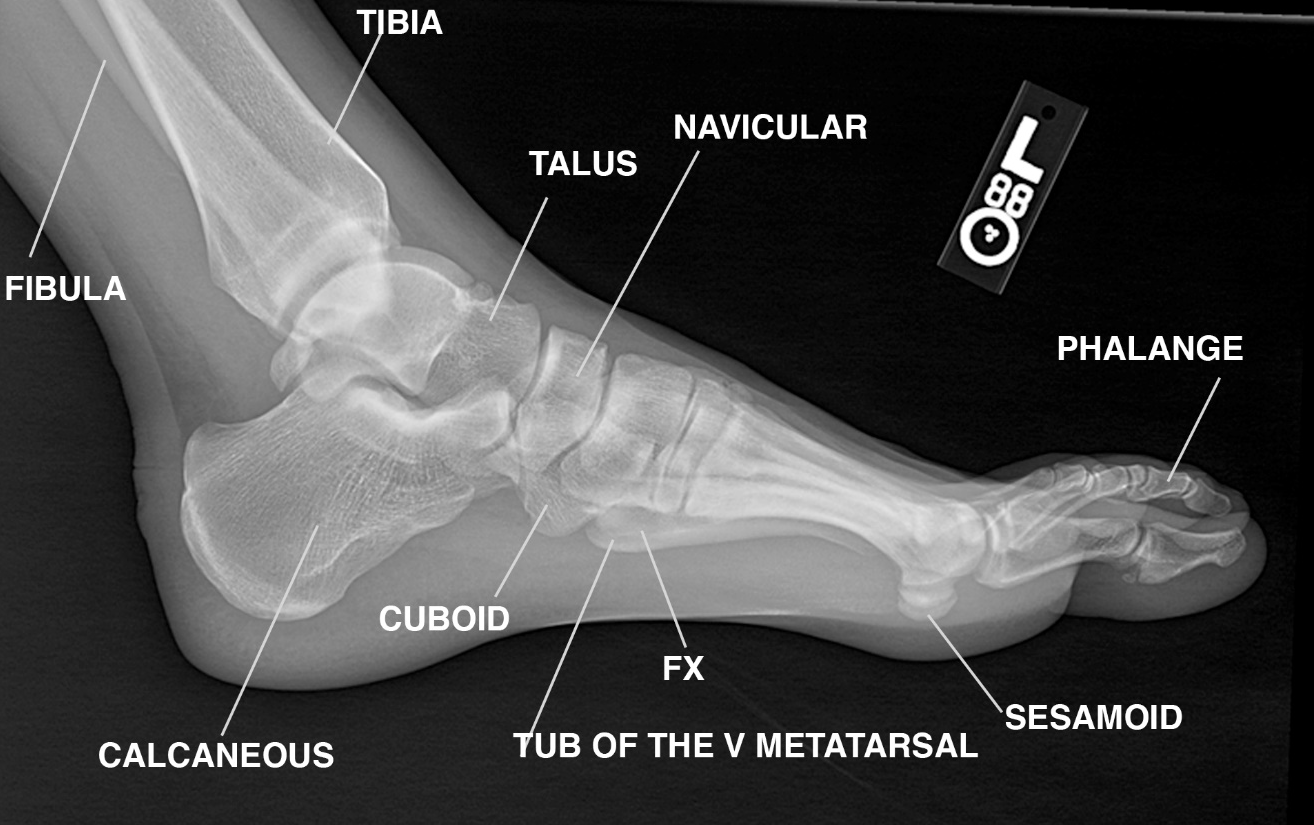
The foot and ankle is composed of 26 bones. Fractures around the foot and ankle include ankle fractures, Pilon (articular end of leg bone) fractures, Heel bone (Calcaneum) fractures, Fractures of talus bone, midfoot fractures and dislocations and metatarsal and toes fractures. We proud ourselves in having the knowhow and expertise in the treatment of various complex foot and ankle fractures and have helped numerous patients get back to their normal lives after a debilitating foot and ankle injury.
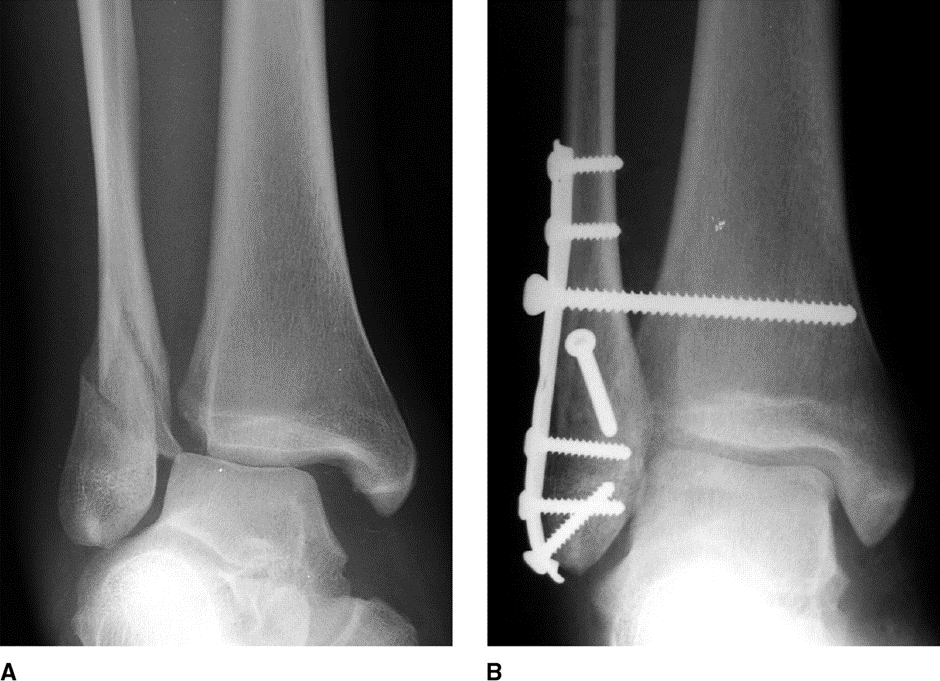
Ankle Fractures:
The ankle joint is made up of the far ends of the leg bones ie the tibia and fibula and the talus bone. They may arise due to twisting or crushing injuries. The rotatory and crushing forces around the ankle may not only fracture the bones but also tear the stabilising ligaments around the ankle. Fractures which may seem hairline on initial x rays may move on putting weight on the leg. Such unstable and displaced ankle fractures will need surgery to realign the bones and fix them. A small minority of undisplaced fractures can be treated in a plaster.
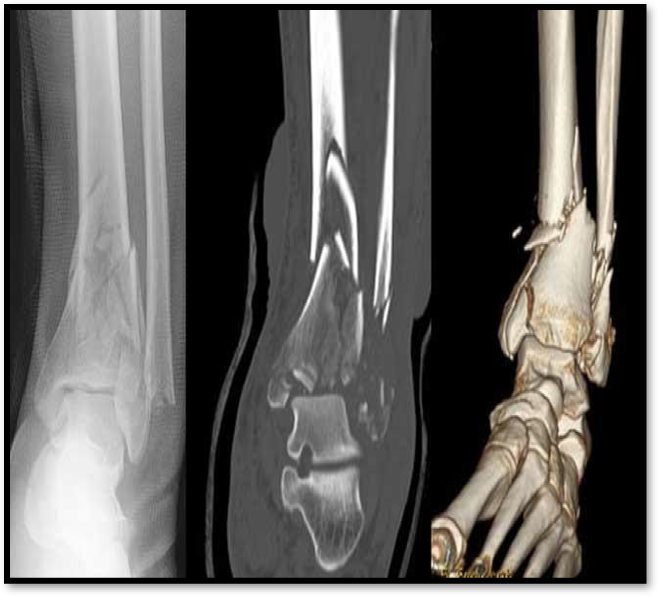
Pilon Fractures:
This involves fracture of the far end of the leg bone involving the ankle joint. This occurs due to high energy forces generated by fall from height or motor vehicle accidents. These are usually associated with a lot of swelling and blisters around the ankle. A staged approach of initial immobilisation of the fracture with an external fixator followed by delayed definitive fixation helps to restore the joint surface with minimal insult to the surrounding soft tissues.

Talus fracture::
The talus forms the bridge between the foot and the leg. Since the ankle forms a part of the ankle, subtalar and midfoot joints, any displacement of the fractured talus is poorly tolerated. Displaced fractures of the talus usually require surgery to restore the alignment and allows the best opportunity for return to normal foot and ankle movement and alignment.
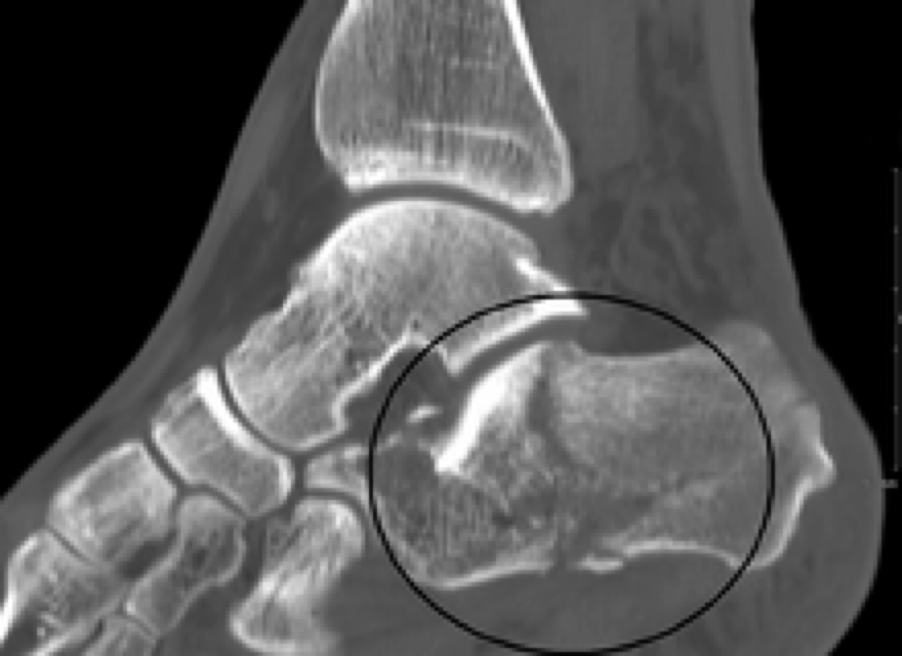
Calcaneum Fractures:
Fractures of the heel bone usually occur when a person lands o his heel while falling from a height or following a motor vehicle accident. Undisplaced fractures can be managed by casting for 8 weeks. If the fracture is displaced it can cause arthritis of the subtalar joint and loss of motion in that joint. This is prevented by realigning the bone pieces and surgical fixation of the bone once the initial swelling has subsided.
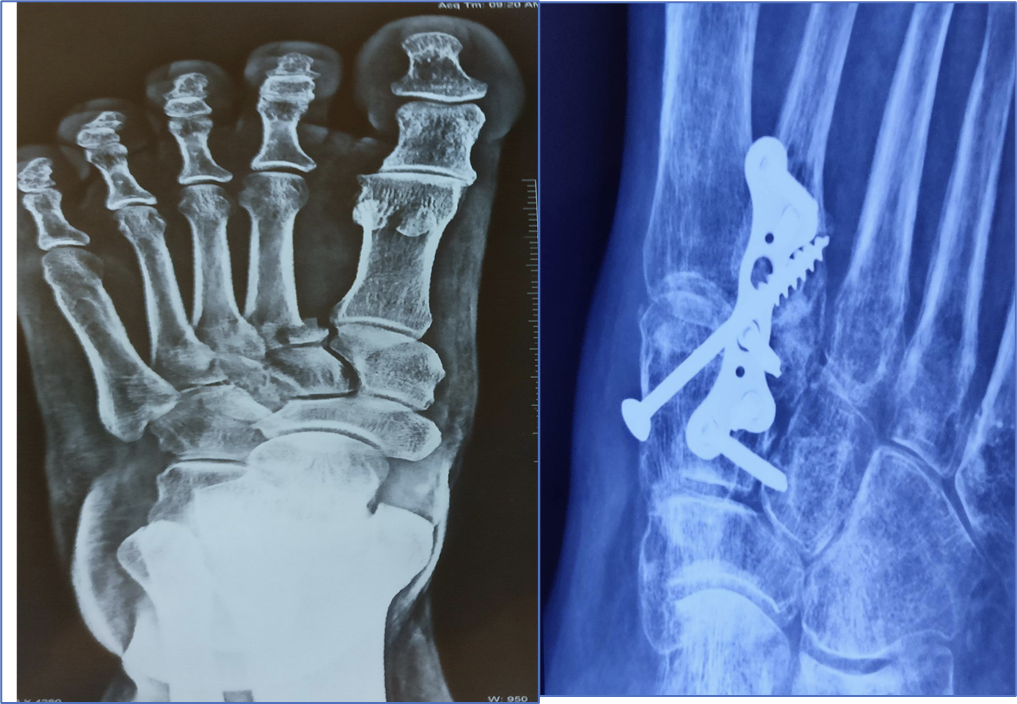
Midfoot fractures and dislocations/Lisfranc’s injury:
This is an injury of the foot in which the metatarsal bones are displaced from their base. This may occur when a person falls forward with the body weight falling on the vertically oriented foot or crush injury to the midfoot. Weight bearing x rays of the foot may unmask the true extent of the injury. Lisfranc’s injury with significant displacement of bones may lead to chronic pain and development of a flat foot. Surgical fixation of these severe injuries helps to give the best results.
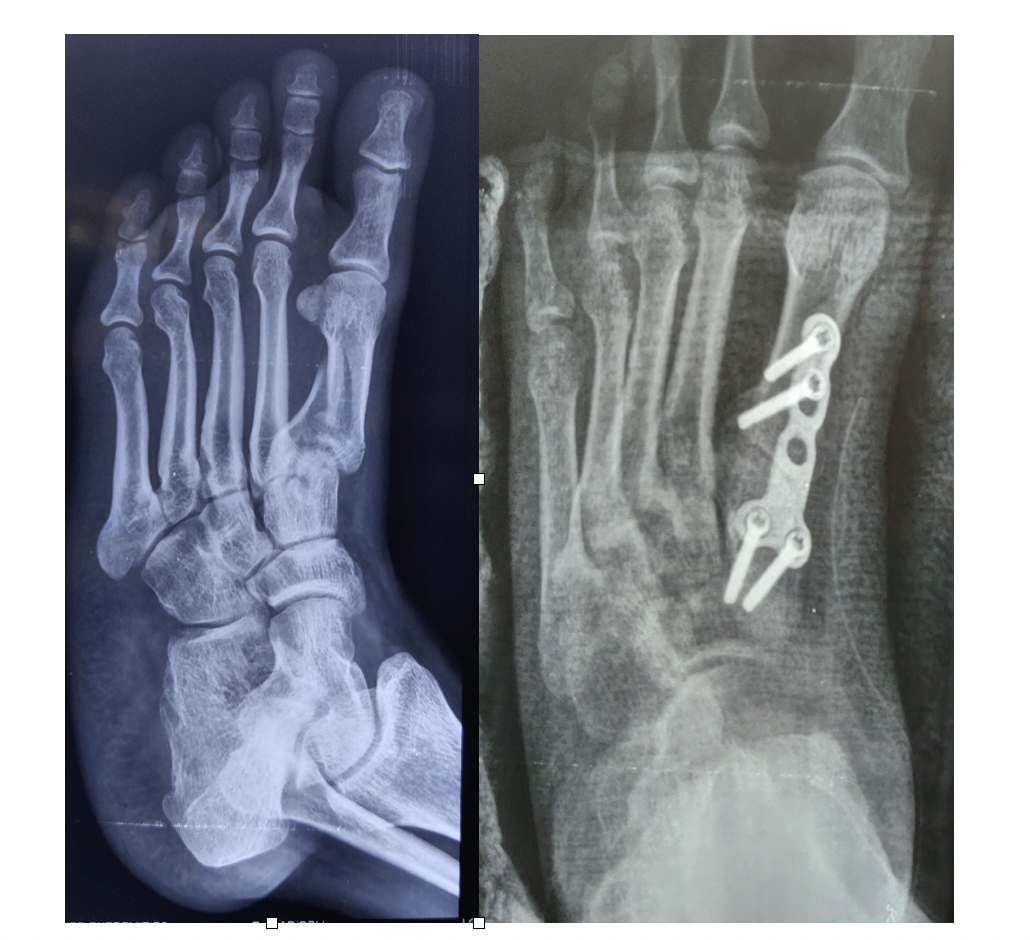
Metatarsal and toes fractures::
Undisplaced fractures of the forefoot bones can be managed with plasters. Displaced or comminuted fractures of these bones may require external fixation or minimally invasive internal fixation with good results.

